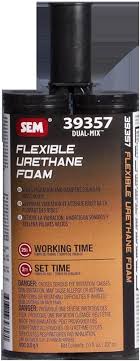
The Versatility of Flexible Urethane Foam
Flexible urethane foam, also known as flexible polyurethane foam, is a versatile material that finds a wide range of applications across various industries. Its unique properties make it a popular choice for cushioning, insulation, and sound absorption purposes.
Properties of Flexible Urethane Foam
Flexible urethane foam is characterized by its softness, flexibility, and resilience. It can be easily compressed and deformed under pressure but quickly returns to its original shape once the pressure is released. This property makes it ideal for use in mattresses, furniture cushions, automotive seating, and other comfort applications.
Applications of Flexible Urethane Foam
Flexible urethane foam is widely used in the furniture industry for making comfortable and durable cushions. In the automotive sector, it is used in car seats to provide passengers with a comfortable ride. Additionally, flexible urethane foam is used in packaging materials to protect fragile items during transportation.
Benefits of Flexible Urethane Foam
One of the key benefits of flexible urethane foam is its ability to conform to the shape of the object it supports, providing customized comfort and support. It also offers excellent insulation properties, making it an energy-efficient choice for both residential and commercial buildings.
Sustainability of Flexible Urethane Foam
Manufacturers are increasingly focusing on producing flexible urethane foam using environmentally friendly processes and materials. Recycling initiatives have been implemented to reduce waste and promote sustainability in the production and disposal of flexible urethane foam products.
Conclusion
Flexible urethane foam continues to be a valuable material in various industries due to its versatility, comfort, and durability. With ongoing advancements in technology and sustainability practices, flexible urethane foam remains a reliable choice for a wide range of applications.
Understanding Flexible Urethane Foam: Key Properties, Applications, Comparisons, Environmental Impact, and Types
- What are the key properties of flexible urethane foam?
- What are the common applications of flexible urethane foam?
- How does flexible urethane foam compare to other cushioning materials?
- Is flexible urethane foam environmentally friendly and recyclable?
- Are there different types or grades of flexible urethane foam available?
What are the key properties of flexible urethane foam?
Flexible urethane foam possesses several key properties that make it a highly sought-after material in various industries. One of its primary characteristics is its softness and flexibility, allowing it to conform to the shape of objects and provide comfortable cushioning. Additionally, flexible urethane foam exhibits excellent resilience, meaning it can quickly bounce back to its original shape after being compressed. This property makes it ideal for applications requiring repeated use and long-term durability. Furthermore, flexible urethane foam offers good insulation properties, making it an efficient choice for thermal and acoustic insulation needs. Overall, the combination of softness, flexibility, resilience, and insulation capabilities makes flexible urethane foam a versatile material with diverse applications.
What are the common applications of flexible urethane foam?
Flexible urethane foam is widely utilized across diverse industries for a multitude of applications. Commonly, this versatile material is employed in the production of comfortable mattresses and furniture cushions, providing users with optimal support and relaxation. In the automotive sector, flexible urethane foam is extensively used in car seats to enhance passenger comfort during travel. Moreover, it serves as a key component in packaging materials, safeguarding delicate items from damage during transportation. The adaptability and resilience of flexible urethane foam make it an indispensable choice for various applications where cushioning, insulation, and sound absorption are essential requirements.
How does flexible urethane foam compare to other cushioning materials?
When comparing flexible urethane foam to other cushioning materials, it stands out for its unique combination of softness, flexibility, and resilience. Unlike traditional cushioning materials like cotton or polyester fiberfill, flexible urethane foam offers superior support and comfort due to its ability to conform to the shape of the object it supports. In contrast to rigid materials such as wood or metal, flexible urethane foam provides a cushioning effect that helps distribute weight evenly and reduce pressure points. Its versatility and durability make it a popular choice for applications where comfort and long-lasting performance are essential.
Is flexible urethane foam environmentally friendly and recyclable?
Flexible urethane foam is known for its versatility and comfort, but questions often arise about its environmental impact and recyclability. While flexible urethane foam itself is not biodegradable, efforts are being made to enhance its sustainability. Manufacturers are increasingly adopting eco-friendly production processes and exploring recycling initiatives to reduce waste and promote a more environmentally friendly lifecycle for flexible urethane foam products. By focusing on innovation and sustainability practices, the industry aims to address concerns about the environmental impact of flexible urethane foam and make strides towards a more sustainable future.
Are there different types or grades of flexible urethane foam available?
When it comes to flexible urethane foam, there are indeed various types and grades available to suit different applications and requirements. Manufacturers offer a range of formulations that vary in density, firmness, and other properties to cater to specific needs. Common variations include high-resilience foam for enhanced durability, memory foam for pressure relief, and convoluted foam for improved airflow. Choosing the right type and grade of flexible urethane foam is crucial to achieving the desired comfort, support, and performance in products such as mattresses, furniture cushions, and automotive seating.
